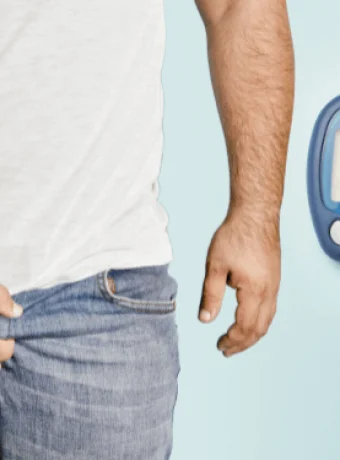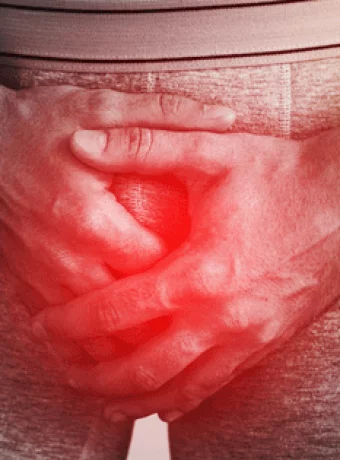Pinch Method for Diabetes: How to beat Diabetes

Last Updated on May 12, 2024 by Lauretta Iyamu, PharmD
Do you or someone you know have diabetes? If so, you are not alone. Diabetes is a severe and chronic condition that affects millions of people around the world. But what if there was a way to beat it? This article will discuss the Pinch Method, an alternative approach to diabetes management that could make all the difference for those struggling with the condition. Read on to learn how this method can help you take control of your diabetes and work towards a healthier future.
What is the Pinch Method for diabetes?
The pinch method is a type of diabetes treatment that uses a slight pinch to stop the flow of blood sugar into the cells. This method is used to help control blood sugar levels and can be used alone or in combination with other diabetes treatments.
The pinch method was first developed in the 1920s by Dr. Joslin, who found that restricting blood sugar levels with small pinches helped to improve blood sugar control in people with diabetes. The pinch method is still used to help people with diabetes control their blood sugar levels.
The pinch method is easy to use and can be done at home. You will need a small, thin object, such as a paper clip, to use as a pinch. You will also need water or juice to wet your finger and hold the pinch against your skin.
To use the pinch method, first wet your finger and hold it against your skin close to the area where you have diabetes. Then, use your other hand to pinch the object tightly against your skin. This will stop the flow of blood sugar into your cells and help to control your blood sugar levels.
What is Diabetes?
Diabetes is a disease that affects the body’s ability to use blood sugar. Blood sugar levels are controlled by insulin, a hormone made by the pancreas. When the amount of glucose in the blood falls too low, diabetes can develop. There are many types of diabetes, but all involve problems with blood sugar control.
How to do the Pinch Method
Diabetes is a serious health condition that can be prevented or cured with the help of the pinch method. The pinch method is a simple and effective way to lower blood sugar levels without medication. The pinch method is also a safe and affordable way to manage diabetes.
Self-acupressure, a technique that involves applying pressure to specific acupuncture points on the body, has shown some promise in helping to lower blood sugar levels. In a study, participants were trained to use self-acupressure on five traditional Chinese acupuncture points: ST-36, SP-6, LIV-3, KD-3, and a point located 3 cm under the patella and a finger toward the side of the tibial plateau.
The technique involved applying intermittent pressure to each point for five minutes. When combined with transcendental meditation and hypnotherapy, self-acupressure appeared to improve blood sugar levels.
It’s important to note that self-acupressure is different from the pinch method and should be used as part of a comprehensive diabetes management plan under the supervision of a complementary medicine provider. It’s also important to remember that self-acupressure should not replace traditional methods of blood sugar control. However, if you’re interested in exploring additional ways to manage your diabetes, you may want to consider self-acupressure as a complementary approach.
To use the pinch method, you must regularly measure your blood sugar levels. You will also need to keep track of your food intake and exercise habits. Once you have measured your blood sugar levels and determined your food and exercise habits, you can use the pinch method to lower your blood sugar levels.
To use the pinch method, place two fingers against the inside of your wrist. You should then close your hand to your fist and apply pressure to your fingers. This will cause your blood sugar levels to drop. You should repeat this process as often as necessary to lower your blood sugar levels.
Benefits of the Pinch Method
The pinch method is a natural way to control blood sugar levels and diabetes. The pinch method works by reducing the amount of sugar in the blood. This can be done by limiting the number of carbohydrates eaten or by restricting the amount of sugar taken in through food or drink.
The pinch method has many benefits.
- It can help control blood sugar levels
- Improving diabetes management
- It can also help to reduce the risk of complications from diabetes, such as heart disease and stroke
- The pinch method can help to reduce weight gain in people with diabetes
Tips for Implementing the Pinch Method
If you’re looking to overcome diabetes, the pinch method may be just what you need. This simple yet effective treatment can help control blood sugar levels and reduce the risk of developing type 2 diabetes. Here are some tips for implementing the pinch method:
- Keep a close watch on your blood sugar using an accurate glucose monitor. Track your progress and make adjustments as needed.
- Focus on choosing healthy foods that will help regulate your blood sugar. Include plenty of fruit, vegetables, whole grains, and low-fat proteins in your diet. Avoid sugary items, processed foods, and sweets altogether.
- Exercise regularly – It’s critical for maintaining good overall health and reducing the risk of type 2 diabetes. Regular physical activity can also improve insulin sensitivity which is key to managing blood sugar levels with the pinch method.
Possible Risks of the Pinch Method
There are a few risks associated with the pinch method of treating diabetes, but they are generally small.
First, you can injure yourself if you use too much force when pinching your skin.
Second, if you cannot accurately measure your blood sugar levels, you may not get the best treatment for your diabetes.
Finally, the pinch method can be challenging to adapt to over time, so it may only work well for some as it does initially. So, it is essential to be patient and continue using other methods along with the pinch method.
See your doctor if you experience unusual symptoms, such as extreme hunger, thirst, or fatigue.
Strategies for Implementing the Pinch Method
The pinch method is a relatively new way to manage diabetes that has been gaining popularity in recent years. The pinch method is based on the idea that you can control your blood sugar levels by restricting your intake of carbohydrates.
There are a few key things to keep in mind when using the pinch method:
- First, you should consult your doctor before starting any new diabetes management plan, including the pinch method.
- You should track your blood sugar levels using a blood glucose meter to ensure you meet your target levels.
- You should eat a balanced diet and avoid excessive sugar intake.
- You should exercise regularly to help maintain your overall health and improve your blood sugar control.
- You should be patient and consistent with your pinch method implementation.
Though the pinch method is not a cure for diabetes, it can be a helpful tool in managing blood sugar levels. It is important to consult with your doctor before starting this or any other diabetes management plan and to track your progress using a blood glucose meter. Moderation of carbohydrates, exercise, patience
Long-Term Benefits of Using the Pinch Method
The pinch method, also known as the fast-track diabetes diet or diabetic fasting and workout plan, is a low-carbohydrate diet that effectively controls blood sugar levels in people with diabetes. The diet restricts the number of carbs a person can eat daily and requires them to consume only small amounts at frequent intervals throughout the day instead of one large meal.
Like any dietary approach, the pinch method has pros and cons. Some argue that it can help you lose weight more quickly than standard diets because it limits your calorie intake. However, some people who have tried this approach report difficulty sticking to it long-term because they get bored of eating lesser amounts all the time. Additionally, people with diabetes who use the pinch method must be very diligent in tracking their blood sugar levels because eating too many carbs can quickly raise blood sugar levels.
Despite these drawbacks, there are a few long-term benefits to using the pinch method if it successfully controls your blood sugar level. For one, studies have shown that people who follow this type of diet are less likely to develop type 2 diabetes or to experience any other health problems associated with insulin resistance.
Additionally, people who use the pinch method report feeling more energetic and satisfied than those who do not. Therefore, the pinch method may be a good option if you want an easier way to control your blood sugar level without resorting to medications or surgery.
Making Lifestyle Changes to Support the Pinch Method
There are many ways to help control diabetes, but the pinch method is one of the most effective. This simple technique involves using your fingers and thumb to pressure, particularly on the stomach areas or intestines. This tiny bit of pressure helps to keep blood sugar levels under control by preventing food from being absorbed into the body too quickly.
The pinch method can be a vital part of any diabetes treatment plan. Still, diet and exercise benefit people who have difficulty controlling their blood sugar levels. It is also an effective way to prevent Type 2 diabetes caused by lifestyle factors and genetics. If you are struggling with diabetes, consider trying the pinch method as part of your overall plan.
Alternative Diabetes Treatments
Alternative diabetes treatments are important to explore if you are not satisfied with the results of using medications and lifestyle changes alone. Some alternative therapies include:
- Adding exercise to your daily routine can help regulate blood sugar levels, improve mood, and reduce stress. In addition, regular aerobic activity helps lower risk factors for type 2 diabetes, such as obesity, lack of exercise, and elevated levels of bad cholesterol.
- Nutritional supplements: Vitamins, minerals, herbs, and other supplements have been shown in studies to help regulate blood sugar levels. Supplements that contain insulin-like growth factor (IGF) can also support the body’s ability to use insulin effectively. IGF is a hormone that helps promote tissue growth, including new cells in the pancreas, which may play a role in preventing type 2 diabetes development in some people.
- Beta-blockers: Beta blockers are medications used to treat heart conditions and anxiety disorders that can also help lower blood sugar levels by decreasing glucose production from the liver. Side effects may include weight gain and fluid retention, which should be monitored by a doctor when starting beta blockers for diabetes treatment.
- Metformin: Metformin is an oral medication commonly prescribed for type II diabetes that decreases blood sugar levels by blocking the action of glucagon. It is also effective at helping people lose weight. However, metformin does have side effects such as fatigue, drowsiness, low thyroid function, and nausea. Nevertheless, many patients choose it over other treatments because it does not require frequent doctor visits or changes in diet.
Seeking Professional Guidance with Diabetes Management
If you are managing your diabetes on your own, it is vital to seek professional guidance from a diabetes specialist. A diabetes specialist can help you to understand your blood sugar levels, diabetes medications, and other treatments. They can also guide how to manage your diabetes effectively. If you cannot control your diabetes on your own, it is crucial to find a diabetes care team to help you.
Final Thoughts on Beating Diabetes with the Pinch Method
The pinch method is a simple yet effective way to manage diabetes. It is based on the principle that limiting sugar consumption can lower blood sugar levels. The pinch method can be used alone or in combination with other diabetes management strategies.
The Pinch Method can be a powerful tool in managing diabetes, but it is important to remember that both benefits and risks are involved. It should be considered alongside changes to lifestyle, alternative treatments, and seeking professional guidance if needed. With research, care, and dedication, the Pinch Method can help you take control of your diabetes and live a healthier life.
References
- Mihardja H, Harja KP. Acupuncture for treating hypertension and type 2 diabetes mellitus as comorbidities in patients with covid-19. Medical Acupuncture [Internet]. 2021 Jun 1 [cited 2022 Dec 28];33(3):197–202. Available from: https://www.liebertpub.com/doi/10.1089/acu.2020.1475
- Hyperglycemia (High blood glucose) | ada [Internet]. [cited 2022 Dec 28]. Available from: https://diabetes.org/healthy-living/medication-treatments/blood-glucose-testing-and-control/hyperglycemia
- Managing diabetes | niddk [Internet]. National Institute of Diabetes and Digestive and Kidney Diseases. [cited 2022 Dec 28]. Available from: https://www.niddk.nih.gov/health-information/diabetes/overview/managing-diabetes
- Zarvasi A, Jaberi AA, Bonabi TN, Tashakori M. Effect of self-acupressure on fasting blood sugar (Fbs) and insulin level in type 2 diabetes patients: a randomized clinical trial. Electron Physician [Internet]. 2018 Aug 25 [cited 2022 Dec 28];10(8):7155–63. Available from: https://www.ncbi.nlm.nih.gov/pmc/articles/PMC6122868/
- Foods that spike a patient’s blood glucose are not what you think [Internet]. American Medical Association. [cited 2022 Dec 28]. Available from: https://www.ama-assn.org/delivering-care/diabetes/foods-spike-patient-s-blood-glucose-are-not-what-you-think
- Insulin, medicines, & other diabetes treatments | niddk [Internet]. National Institute of Diabetes and Digestive and Kidney Diseases. [cited 2022 Dec 28]. Available from: https://www.niddk.nih.gov/health-information/diabetes/overview/insulin-medicines-treatments
- Feng Y, Fang Y, Wang Y, Hao Y. Acupoint therapy on diabetes mellitus and its common chronic complications: a review of its mechanisms. BioMed Research International [Internet]. 2018 Oct 22 [cited 2022 Dec 28];2018:1–9. Available from: https://www.hindawi.com/journals/bmri/2018/3128378/



